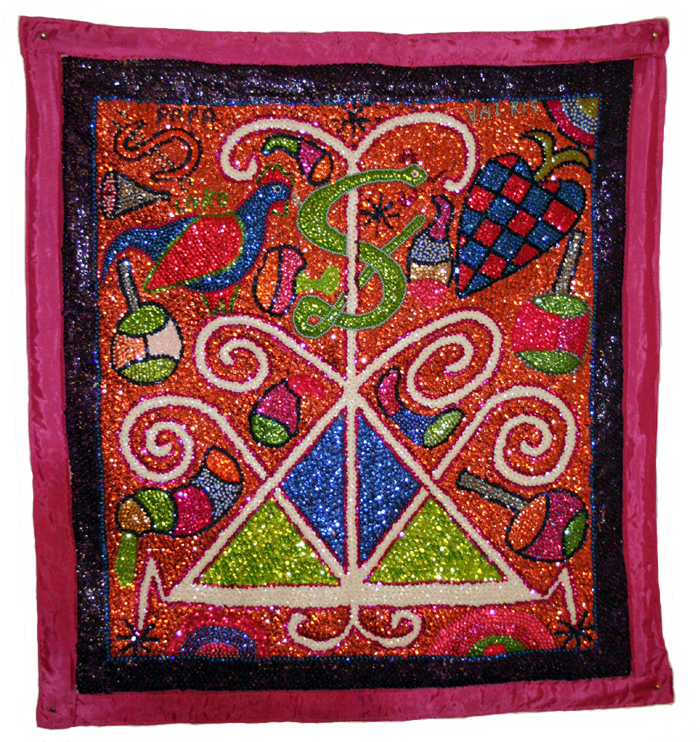|
Captain Debas
In the religion of Haitian Vodou, Captain Debas (also Debard, Deebat) is a loa of the guede. Captain Debas is part of the rada nation, not guede, and should be served in rada rites rather than guede rites. He is a family loa and can be combined with any other loa of any nation who allows families. Originates from Africa Africa is the world's second-largest and second-most populous continent after Asia. At about 30.3 million km2 (11.7 million square miles) including adjacent islands, it covers 20% of Earth's land area and 6% of its total surfac ... and is originally from Vodoun. References * Haitian Vodou gods {{Deity-stub ... [...More Info...] [...Related Items...] OR: [Wikipedia] [Google] [Baidu] |
Haitian Vodou
Haitian Vodou () is an African diasporic religions, African diasporic religion that developed in Haiti between the 16th and 19th centuries. It arose through a process of syncretism between several traditional religions of West Africa, West and Central Africa and Roman Catholicism. There is no central authority in control of the religion and much diversity exists among practitioners, who are known as Vodouists, Vodouisants, or Serviteurs. Vodou teaches the existence of a transcendent creator divinity, Bondyé, Bondye, under whom are spirits known as . Typically deriving their names and attributes from traditional West and Central African deities, they are equated with Roman Catholic saints. The divide into different groups, the ("nations"), most notably the Rada lwa, Rada and the Petro lwa, Petwo, about whom various myths and stories are told. This theology has been labelled both Monotheism, monotheistic and Polytheism, polytheistic. An initiatory tradition, Vodouists commonly ... [...More Info...] [...Related Items...] OR: [Wikipedia] [Google] [Baidu] |
Guede
The Gede () are the family of lwa, spirits or deities associated with Ancestor worship in Haitian Vodou, that represent the powers of death and fertility. They are often said to be found at burial sites, where they escort the deceased to their afterlife. Gede spirits include Gede Doub, Guede-Linto, Guede L'Orage, Guede Oussou, Guede Nibo and Guede Masaka, and Guede Ti Malice. All are known for the drum rhythm and dance called the "banda". In possession, they will drink or rub themselves with a mixture of clairin (raw rum) and twenty-one scotch bonnet or goat peppers. Fèt Gede is celebrated on 2 November, All Souls' Day ("Festival of the Dead"). Boons granted by the Gede not repaid by this date will be avenged afterwards. * Papa Gede is the corpse of the first man who ever died. He is recognized as a short, dark man with a high hat on his head who likes to smoke cigars and eat apples. Papa Gede is a psychopomp who waits at the crossroads to take souls into the afterlife. H ... [...More Info...] [...Related Items...] OR: [Wikipedia] [Google] [Baidu] |
Rada Loa
The Rada are a family of lwa spirits in the religion of Haitian Vodou. They are regarded as being sweet-tempered and "cool", in this contrasting with the Petro lwa, which are regarded as volatile and "hot". Description The Rada lwa have been described as a "pantheon" of deities in Haitian Vodou. The Rada lwa are deemed sweet-natured and dependable. In this, they contrast with the Petwo lwa, whom are deemed volatile and hot-tempered. The Rada are referred to as ''lwa rasin'', meaning "root lwa." As they are often regarded as having an intimate relationship with their worshippers, they are often given names implying a family connection, such as ''Papa'' ("father") and ''Kouzen'' ("cousin"). The Petwo lwa are kept separate from the Rada lwa, both spatially, by placing their altars in different parts of the ''ounfo'' (temple), and temporally, by invoking them at different stages in a ritual. History The Rada pantheon have West African origins; specifically, the pantheon of Rada lwa ... [...More Info...] [...Related Items...] OR: [Wikipedia] [Google] [Baidu] |
Africa
Africa is the world's second-largest and second-most populous continent after Asia. At about 30.3 million km2 (11.7 million square miles) including adjacent islands, it covers 20% of Earth's land area and 6% of its total surface area.Sayre, April Pulley (1999), ''Africa'', Twenty-First Century Books. . With nearly billion people as of , it accounts for about of the world's human population. Demographics of Africa, Africa's population is the youngest among all the continents; the median age in 2012 was 19.7, when the worldwide median age was 30.4. Based on 2024 projections, Africa's population will exceed 3.8 billion people by 2100. Africa is the least wealthy inhabited continent per capita and second-least wealthy by total wealth, ahead of Oceania. Scholars have attributed this to different factors including Geography of Africa, geography, Climate of Africa, climate, corruption, Scramble for Africa, colonialism, the Cold War, and neocolonialism. Despite this lo ... [...More Info...] [...Related Items...] OR: [Wikipedia] [Google] [Baidu] |

